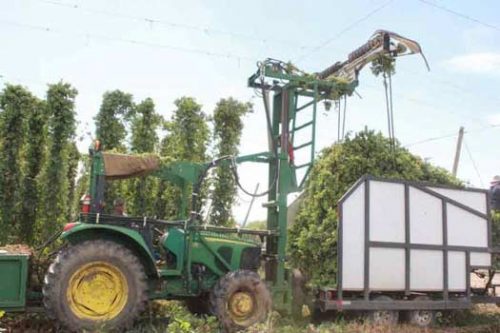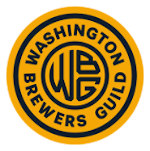Fueled by the craft brewing industry, the U.S. hop crop continues to grow at an unprecedented rate. In a statement released today by Hop Growers of America (HGA), an organization that promotes American-grown hops domestically and internationally, hop acreage in the U.S. continues to rise and has nearly doubled in the past five years.
Despite a decrease in overall beer production domestically and abroad, demand for hops continues to rise as beer drinkers continue to reach for heavily hopped beers. That is, the parts of the beer industry that have suffered are not the small, independent breweries that produce hop-forward beers. The proliferation of breweries in America, where there are now more than 5,300 small and independent breweries, along with the continued popularity of IPAs, is in large part responsible for the growth.
Hop Growers of America notes that this is not entirely good news. While the continued demand for growth is, overall, good news for hop growers and brewers, it is not without some concern. The U.S. acreage has grown 75.5 percent in just four years. In 2012, USDA-NASS reported the total U.S. acreage was 29,683. For 2016, acreage amplified to 52,963. And, as reported in the International Hop Growers’ Convention (IHGC) April meeting, an additional 5,185 acres are anticipated to total 58,148 acres of hops in the U.S. for 2017.
According to HGA, if anticipated acreage is actualized, then in five years’ time, hop acreage in the United States will have practically doubled. Thanks to increased contracts with breweries and the rapid efficiency of U.S. growers who can respond so quickly to customer demand, hop acreage has risen 95.8 percent in 5 years. In total, since 2012, the U.S. has added 28,465 acres, including the estimated acreage as reported by IHGC, and has more than 50 varieties in the ground.
“To put it into perspective, the U.S. acres added in the last 5 years is larger than the total acreage of any other hop-growing country in the world, outside of our own and Germany, the two largest hop-producing countries. Further, our estimated 2017 acreage increase (5,185 acres – a 9.8 percent growth) by itself is larger than other individual countries’ total acreage outside of the U.S., Germany, and the Czech Republic,” said Ann George, the Executive Director of Hop Growers of America.
The HGA notes that while the continued and rapid growth of acreage has some people concerned about an imbalance in variety acreage as tastes change and growth in the craft segment begins to slow, growers will be looking to rebalance that over the coming years. HGA also notes that alpha acreage is projected to be increasing as well in the U.S. after many years of predominate aroma increases.
Overall, thanks to many more craft customers, and a seemingly unquenchable thirst for IPAs and other highly hopped beers, the result for U.S. growers is a far more stable market than in past years. By “stable market” they mean that there is now high demand as well as a diversified customer base.
“When a brewery has a hop variety they depend on and is crucial to their operation, it is dangerous to rely solely on the spot market,” said Patrick Smith, Vice President, B.T. Loftus Ranches, a renowned hop grower in the Yakima Valley. “Growers rely on forward contracts to plan their acreage for many years out into the future. However, contracting an excessive amount above their needs is not wise either as brewers can be left with expensive hops that they may not be able to sell to other brewers. Over-contracting can also lead to a surplus in the market which tends to discourage future investments in productive capacity and leads to increasing market instability. A surplus can be just as disruptive to the market as a shortage.”
HGA says that in addition to acreage increasing in the U.S., the stocks (amount left in storage with brewers, growers and merchants) are increasing as well. While the volume of hop stocks have been increasing every year – the USDA NASS March 2017 report showed a 9% increase, and a 7.5% increase the year before that – the overall production has grown in relation to the acreage increases. So, the percentage relative to the overall U.S. crop has gone down.
In addition to volumes of stocks increasing, there are also developing trends with the stock reports showing a rise in the amount of stocks being held with merchants, and less with brewers. As a perennial plant in which one harvest needs to last a full year of brewing demands, it is typical to have stocks larger than 100% of any given year’s production at this time of year.
“It is important to note that the amount of hop stocks which dealers are holding has increased,” adds George. “Merchants are taking on increased risk as the proportion of stocks held in their possession has risen over 10% in the past three years. The stock report is another key signal to the market and we will continue to monitor these data trends.”
“Overall, we are excited with the rejuvenation of our industry over the last few years,” notes Smith. “Looking to the future, long-term stability in the supply-demand balance and pricing is in the best interest of brewers and growers alike. This is best achieved through frequent communication and responsible contracting between brewers and their hop suppliers.”
Cheers to our sponsors, like…

































